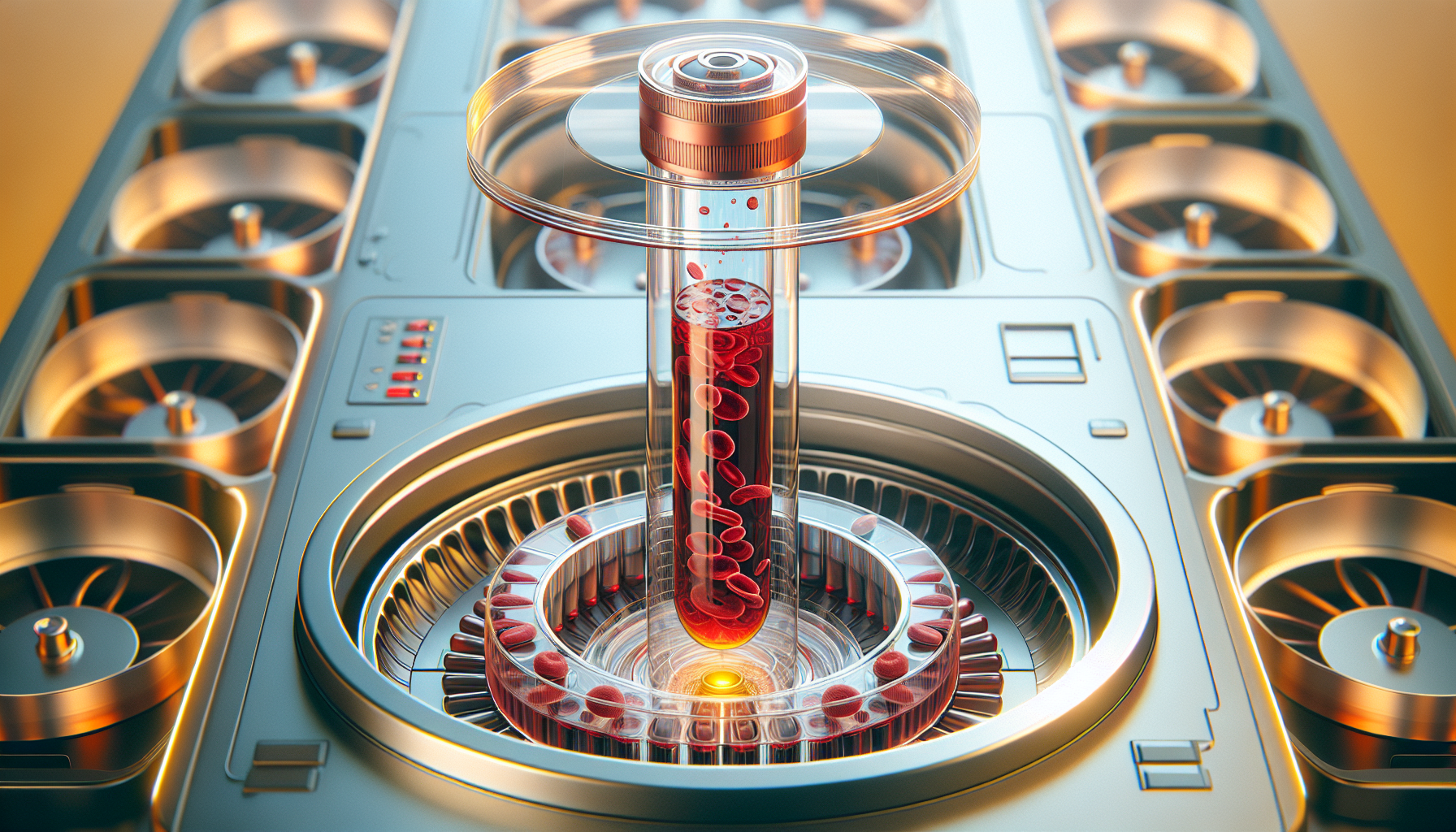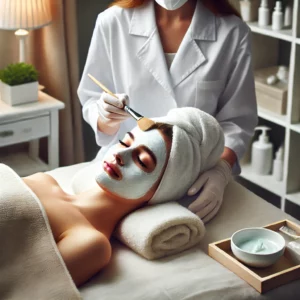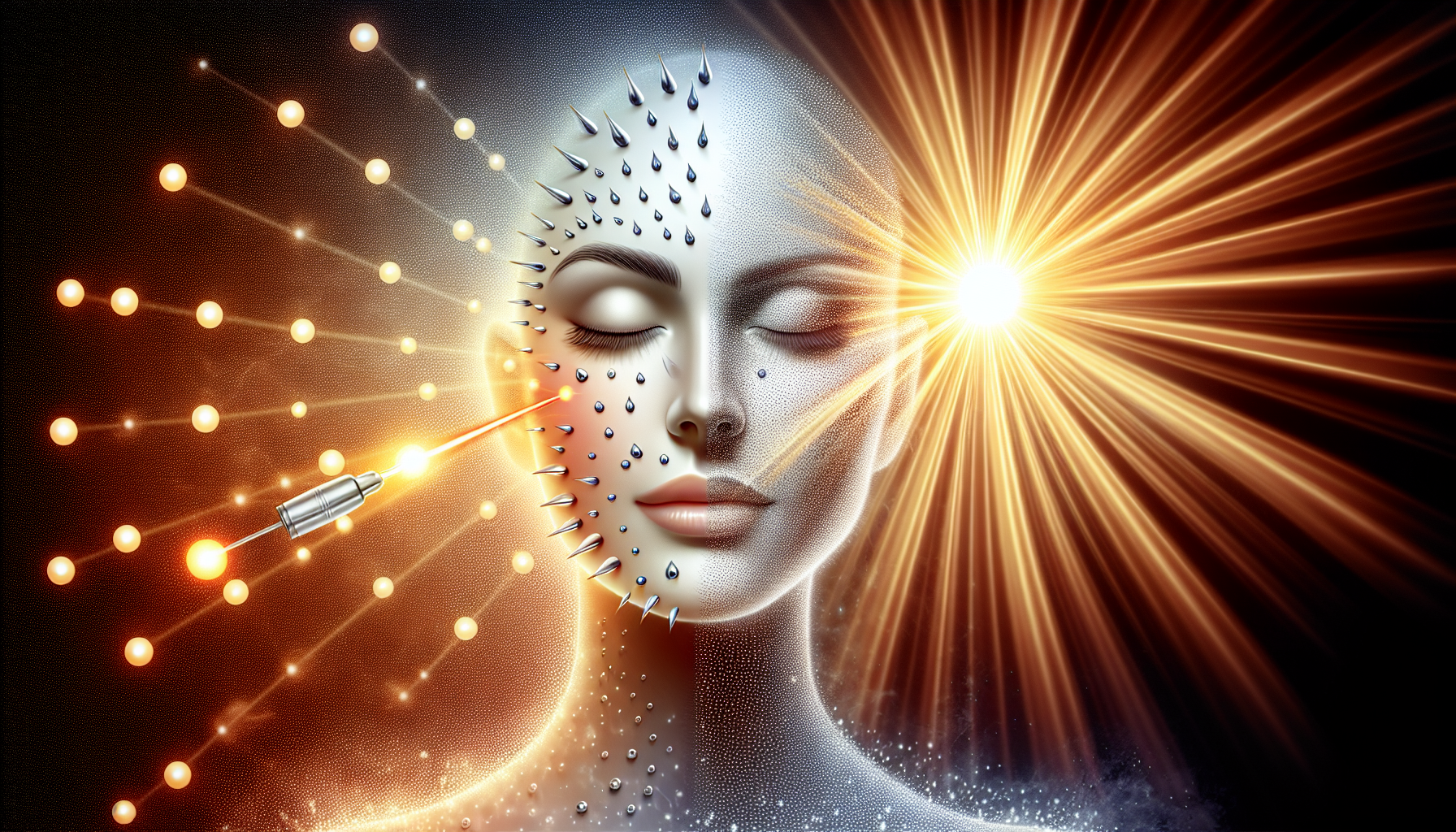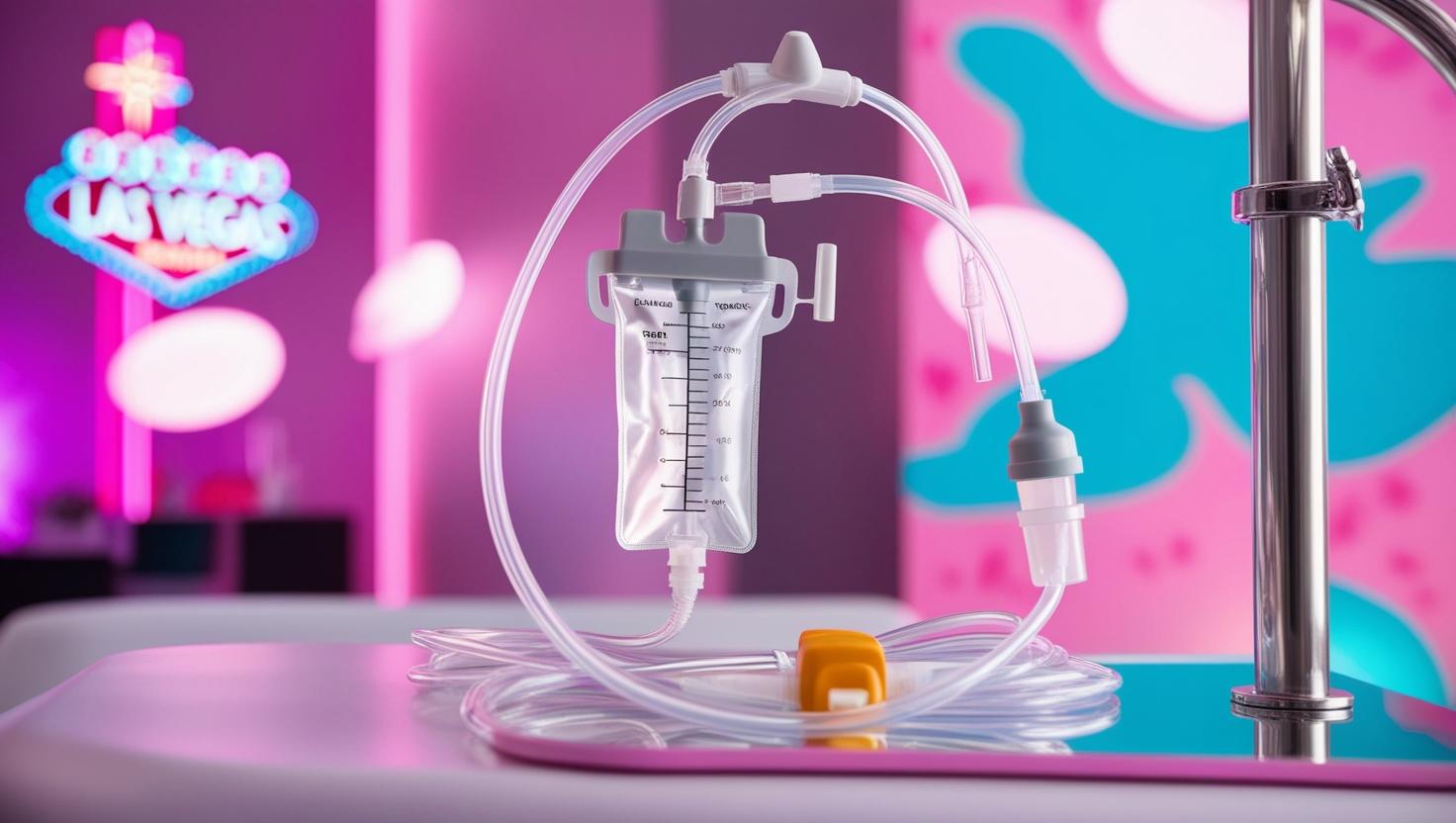Curious about whether platelet rich plasma treatments for skin rejuvenation can truly enhance your complexion? PRP therapy uses your own blood to revitalize your skin by promoting natural regeneration. This article will delve into how PRP works, its benefits, and what you can expect from the treatment.
Key Takeaways
- Platelet Rich Plasma (PRP) therapy utilizes the patient’s own blood to harness high concentrations of growth factors and platelets, promoting tissue regeneration and healing, making it popular for skin rejuvenation and hair regrowth.
- The PRP treatment procedure involves drawing a small blood sample, isolating platelet-rich plasma through centrifugation, and injecting it into targeted areas to stimulate collagen production and skin renewal, with minimal downtime and mild side effects.
- Ideal candidates for PRP therapy include individuals seeking to improve skin quality, reduce wrinkles, and address issues like acne scars and hyperpigmentation, although those with certain medical conditions or lifestyle factors should consult a healthcare provider to determine suitability.
Introduction
Have you caught wind of the latest trend in regenerative medicine that’s making a splash in the aesthetic world? It’s called Platelet Rich Plasma (PRP) therapy, and it’s not just for athletes recovering from injury anymore. PRP stands as a beacon of innovation, offering a path to rejuvenated skin and luscious locks by harnessing the power of your own blood. This isn’t science fiction; it’s a reality that’s changing lives.
At first glance, PRP may seem like a product of modern alchemy, turning your blood into a potent elixir for youth. But there’s compelling science behind it. PRP is rich in growth factors and cytokines, which play a crucial role in tissue regeneration and wound healing. The high concentrations of platelets found in PRP contribute to various medical treatments, from restoring tissue to encouraging hair regrowth. It’s a natural process, amplified.
In this journey, we’ll delve into the depths of PRP therapy, exploring its applications for skin rejuvenation and hair regrowth. We’ll uncover how a small volume of your plasma, laden with a high concentration of platelets, can initiate a cascade of regeneration and growth. So, if you’re intrigued by the prospect of turning back the hands of time using the int j mol sci within you, keep reading. The secrets of PRP therapy are about to be unveiled.
What Is Platelet Rich Plasma (PRP) Therapy?

Imagine a treatment that can heal from within, utilizing the very essence of your own blood. That’s the magic of Platelet Rich Plasma (PRP) therapy. But what exactly is this sought-after treatment? PRP therapy is a form of regenerative medicine that maximizes the body’s natural healing capabilities. It involves a concentration of platelets that can be up to ten times greater than that found in normal circulating blood, hence the term “platelet rich”.
This innovative therapy takes a small sample of blood, similar to what you might give during a routine test, and then it’s spun in a centrifuge. This process separates the blood into layers, isolating the platelet-rich plasma from the red blood cells and platelet poor plasma. The resulting PRP is a concentrated source of autologous platelet rich plasma, meaning it comes from the patient’s own body. It’s this rich plasma, teeming with platelets and growth factors, that is then injected back into the patient’s body to promote healing, regeneration, and yes, even hair regrowth.
As we explore the world of PRP therapy, the terms “prp injections,” “platelet rich plasma therapy,” and “prp treatment” will become familiar. They all refer to the process of using this potent form of your blood to treat a range of conditions, including:
- sports injuries
- signs of aging
- hair loss
- joint pain
- chronic wounds
With its ability to stimulate hair follicles and rejuvenate the skin, PRP stands at the forefront of cosmetic treatments, offering a natural alternative to more invasive procedures for improving hair density, maintaining a healthy hair follicle, and promoting stimulate hair growth as well as stimulate hair regrowth as a hair loss treatment.
How PRP Treatments Rejuvenate the Skin
The quest for youthful, radiant skin has led many to the doorstep of PRP therapy, but how exactly does it breathe new life into aging complexions? The secret lies in the potent growth factors found within platelet rich plasma. When PRP is injected into the skin, it sets off a chain reaction of tissue regeneration and wound healing, marking the start of an incredible transformation.
During the PRP treatment, a series of phases unfold: inflammation, proliferation, and remodeling. This isn’t just a quick fix; it’s akin to flipping a switch that activates the body’s innate repair mechanisms. The growth factors released by PRP stimulate the production of collagen and elastin, the building blocks of smooth, firm skin. It’s like giving your skin a command to rejuvenate itself, and the results can be astonishing. Wrinkles soften, the texture becomes smoother, and even stubborn issues like pigmentation and acne scars begin to fade.
The beauty of PRP treatments doesn’t stop at the surface. As the skin heals from within, improvements in radiance, firmness, and softness emerge. Think of it as a revitalization that works deep within the skin’s layers, not just a superficial makeover. When combined with techniques like micro-needling, the absorption of PRP is maximized, leading to even more pronounced results in skin texture and collagen production. With every treatment, the skin becomes a canvas of renewal, reflecting a healthier, more youthful appearance.
The PRP Treatment Procedure

The transformative journey of PRP therapy begins with a simple blood draw, not unlike what you might experience during an annual check-up. However, what follows is a meticulous process that unlocks the regenerative potential of your blood. Once drawn, the blood is placed in a centrifuge, where it’s spun to separate the layers, including the sought-after platelet rich plasma.
This golden layer of PRP, rich in healing properties, is carefully extracted and prepped for injection. With the precision of a skilled artist, the practitioner administers the PRP into the targeted areas using tiny needles. To ensure your comfort, a local anesthetic is often used, minimizing any discomfort associated with the injections. It’s a delicate dance between science and art, where the practitioner’s expertise is just as vital as the treatment itself.
The entire procedure is surprisingly swift, often completed within an hour, allowing most patients to return to their daily activities without significant downtime. It’s a small investment of time for a treatment that holds the promise of lasting results, setting PRP therapy apart from more invasive alternatives. With each session tailored to the individual’s needs, PRP stands as a personalized approach to rejuvenation and healing.
Who Can Benefit from PRP Skin Rejuvenation?
PRP therapy is not a one-size-fits-all solution, but it casts a wide net, embracing a diverse array of individuals seeking skin rejuvenation. Ideal candidates are those who yearn for a refreshed appearance and have concerns like aging skin, fine lines, wrinkles, and uneven skin tone. PRP can be a beacon of hope for those battling acne scars or hyperpigmentation, offering a chance to reclaim the skin’s natural vibrancy.
But PRP is more than just a cosmetic fix; it’s a treatment that can improve skin tone and texture, helping individuals feel more confident in their skin. While the benefits are extensive, it’s important to note that PRP isn’t suitable for everyone. Certain conditions, such as autoimmune diseases, or lifestyle factors like tobacco use, may present contraindications for the therapy. It’s crucial to consult with a healthcare provider to determine if PRP is appropriate for you.
Despite its wide-reaching benefits, PRP therapy requires a careful assessment of each individual’s medical history and current health status. Contraindications such as recent illness, fever, or specific medical conditions must be considered to ensure the safety and effectiveness of the treatment. By doing so, PRP therapy remains a targeted and responsible approach to skin rejuvenation, tailored to those who stand to benefit the most.
Expected Results and Timeline
Embarking on a PRP therapy journey is an investment in your skin’s future, with results that unfold over time. Unlike some treatments that promise instant gratification, PRP builds upon the natural rhythms of your body’s healing processes. Initial improvements may be subtle, but with patience comes reward. Over the course of several sessions, the true potential of PRP emerges, revealing a significant enhancement in skin quality, including a reduction in wrinkles and an improvement in texture.
The path to these improvements typically involves a series of treatments, spaced four to six weeks apart. Following this initial phase, maintenance sessions are recommended every six to twelve months to preserve the gains achieved. It’s a commitment that echoes the cycles of nature—regular care and attention yield the most bountiful results.
The beauty of PRP therapy is not just in the outcomes but in the journey. Each session builds upon the last, creating a cumulative effect that grows more pronounced with time. As the skin’s quality evolves, so does the sense of satisfaction and confidence in one’s appearance. It’s a timeline that respects the body’s intrinsic healing timeline, offering a methodical and sustainable approach to skin rejuvenation.
Side Effects and Recovery
Like any medical procedure, PRP therapy comes with its own set of considerations, particularly regarding side effects and recovery. Fortunately, the side effects associated with PRP are generally mild and transient. Patients may experience some swelling, redness, or bruising at the injection sites, but these are typically short-lived and resolve on their own. It’s the body’s natural response to the injections, signaling the commencement of the healing process.
Most patients find the procedure to be relatively pain-free, especially when a local anesthetic is applied. Post-treatment, it’s not uncommon to feel a mild headache or a bit of itching, but these symptoms are tolerable and usually dissipate quickly. Major side effects are rare, and the risk of allergic reaction is minimal, given that PRP uses the patient’s own blood.
Recovery from PRP therapy is swift, allowing most individuals to resume their daily activities almost immediately. There’s no need for antibiotics, and patients can typically return to work the following day. This ease of recovery makes PRP an attractive option for those with busy lifestyles who are seeking an effective treatment without the downtime associated with more invasive procedures.
Comparing PRP with Other Skin Rejuvenation Treatments

When considering skin rejuvenation options, it’s important to weigh PRP therapy against other available treatments. PRP stands out for its ability to be combined with other modalities, such as micro-needling or laser therapy, to enhance overall results. Studies have shown that when paired with these techniques, PRP can improve outcomes, offering better wrinkle reduction and skin texture enhancements than when these treatments are used alone.
PRP therapy is also favored for its fewer side effects and longer-lasting results compared to some alternative treatments. For instance, compared to readymade growth factor solutions, PRP has shown higher patient satisfaction, which is a testament to its efficacy. Moreover, when added to procedures like facial lipofilling, PRP may not increase skin elasticity or volume retention, but it can reduce recovery time, making the healing process more comfortable for patients.
The choice of skin rejuvenation treatment must be tailored to the individual, taking into account their specific needs, goals, and medical history. PRP therapy’s ability to work synergistically with other treatments makes it a versatile and effective option in the quest for youthful, radiant skin. Its natural approach and promising outcomes position it as a strong contender in the realm of aesthetic medicine.
Cost and Insurance Coverage
An important consideration for any medical procedure is the cost and whether it is covered by insurance. PRP therapy, being a cosmetic treatment, is typically not covered by insurance plans. This means that patients should be prepared to cover the costs out of pocket. The cost of PRP therapy can vary widely depending on the provider, the geographic location, and the number of sessions required. On average, an individual PRP session can cost around $717, though this figure can fluctuate based on the specific treatment area and the clinic’s pricing structure.
The cost of PRP therapy reflects its personalized nature and the specialized equipment used in the procedure. While it may seem steep for some, package deals are often available for multiple sessions, providing a more cost-effective option for those who require several treatments. It’s important to weigh the cost against the potential benefits and the long-term value it may bring to your skin’s health and appearance.
When considering PRP therapy, it’s crucial to have a frank discussion with your provider about the expected number of sessions and the total cost. While the lack of insurance coverage may be a barrier for some, many find the investment worthwhile for the natural, long-lasting results that PRP therapy can offer. It’s a consideration that requires careful thought, balancing the desire for rejuvenation with financial practicality.
Choosing the Right Provider for PRP Therapy
The success of PRP therapy is heavily influenced by the skill and experience of the provider. Therefore, selecting the right clinic and practitioner is paramount. A board-certified dermatologist or plastic surgeon with specialized training in PRP therapy is ideal, as they will be well-versed in the nuances of the treatment and equipped to handle any complications. Verifying that the clinic adheres to proper protocols and health and safety guidelines will also ensure a safe and effective experience.
When choosing a provider for PRP therapy, it’s beneficial to seek out clinics that offer treatments tailored to your specific diagnosis and medical history. This includes considering whether the clinic utilizes industry-standard equipment, such as ultrasound-guided injections, which can improve the precision of the treatment. Providers who specialize in the type of PRP treatment you’re seeking, whether for cosmetic purposes or to address hair loss, will typically have more experience and better outcomes.
Researching the clinic’s reputation is also key. Online reviews, patient testimonials, and staff credentials can provide valuable insights into the level of care and patient satisfaction you can expect. Establishing a good rapport with your doctor is crucial; feeling comfortable and understood can greatly enhance the overall treatment experience. By taking these factors into account, you can make an informed decision and choose a provider that aligns with your expectations for PRP therapy.
Fortunately, you’ve already found such a clinic right here at Body Balance Medical!
Summary
As we reach the conclusion of our in-depth exploration of Platelet Rich Plasma (PRP) therapy, it’s evident that this innovative treatment stands as a beacon of hope for those seeking to enhance their skin’s appearance and promote hair regrowth. PRP leverages the body’s innate ability to heal and regenerate, offering a natural, albeit sophisticated, pathway to rejuvenation. The procedure, while simple in concept, relies on the body’s complex biological mechanisms to stimulate collagen production, improve skin texture, and potentially regrow hair.
In summary, PRP therapy is a testament to the power of modern medicine and its ability to utilize the body’s own resources to achieve remarkable outcomes. From the initial consultation to the final session, patients can expect a journey marked by gradual and natural-looking improvements. While it may not be suitable for everyone and does come with considerations such as cost and provider selection, for many, the allure of PRP therapy’s potential benefits makes it a compelling choice in the realm of aesthetic and regenerative treatments.
Frequently Asked Questions
How much does PRP therapy typically cost?
PRP therapy typically costs around $717 per session, but prices may vary depending on the provider, location, and treatment area. Package deals for multiple sessions are also an option to reduce the overall cost.
Is PRP therapy covered by medical insurance?
No, PRP therapy is typically not covered by medical insurance and is considered a cosmetic treatment, so patients should budget for the out-of-pocket expense.
How many PRP sessions are needed to see results?
Most individuals will need several PRP sessions, typically spaced four to six weeks apart, with maintenance sessions every six to twelve months for optimal results.
Are there any side effects associated with PRP therapy?
Yes, PRP therapy may cause temporary swelling, redness, and bruising at the injection sites, but major side effects are rare. It’s important to discuss any concerns with your healthcare provider.
How do I choose the right provider for PRP therapy?
Choose a board-certified dermatologist or plastic surgeon with specialized training in PRP therapy. Research the clinic’s reputation, ensure proper protocols are followed, and make sure you feel comfortable with the provider. We’re sure you’ll find all of those qualities here at Body Balance!







